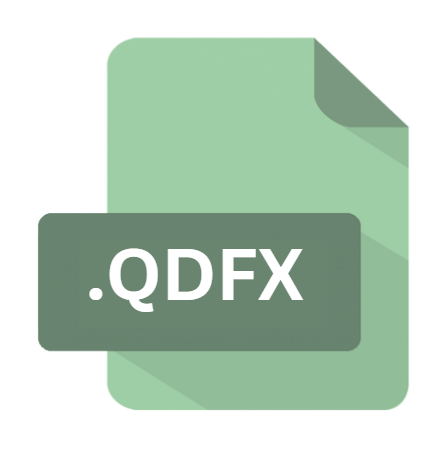.QDFX File Extension

Quicken Financial Exchange File
| Developer | Intuit |
| Popularity | |
| Category | Data Files |
| Format | .QDFX |
| Cross Platform | Update Soon |
What is an QDFX file?
.QDFX files are a proprietary file format used by Quicken to store financial data. These files serve as a means of transferring financial information between different versions of Quicken and other financial software applications.
They encapsulate various types of data, including account transactions, balances, budgets, and investment details.
More Information.
Quicken has a rich history dating back to the 1980s when it was first developed as a personal finance software package by Scott Cook and Tom Proulx.
Over the years, Quicken evolved from a simple checkbook-balancing program to a feature-rich financial management tool catering to diverse user needs.
The introduction of .QDFX files represented a significant milestone in Quicken’s journey, enabling users to seamlessly migrate their financial data across different versions of the software and share it with other applications.
Origin Of This File.
The .QDFX file format was introduced as part of Quicken’s evolution to facilitate seamless data exchange between different platforms and software versions.
Its inception aimed to address the growing need for interoperability in the realm of personal finance management.
By standardizing the exchange format, Quicken aimed to simplify the process of importing and exporting financial data, thereby enhancing user experience and data portability.
File Structure Technical Specification.
.QDFX files follow a structured format designed to encapsulate various financial transactions and related metadata.
While the exact specifications may vary based on the version of Quicken and the specific data being exported, typical components of a .QDFX file include transaction type, date, amount, payee, category, and account information.
Additionally, .QDFX files may include metadata such as account balances, investment holdings, and budget details, providing a comprehensive snapshot of the user’s financial status.
How to Convert the File?
Converting .QDFX files to other formats or vice versa may be necessary to accommodate compatibility requirements or integrate with different software applications. Several methods can be employed to convert .QDFX files, including:
- Using Quicken: Quicken itself provides options to import/export .QDFX files and convert them to formats such as QIF (Quicken Interchange Format) or CSV (Comma-Separated Values).
- Third-Party Tools: Various third-party software applications and online converters specialize in file conversion and may support .QDFX conversion to formats compatible with different financial software.
- Manual Conversion: In some cases, manual data entry or manipulation may be required to convert .QDFX files to a different format, particularly when dealing with complex financial data structures.
Advantages And Disadvantages.
Advantages:
- Interoperability: .QDFX files facilitate seamless data exchange between different versions of Quicken and other financial software applications, enhancing interoperability and data portability.
- Comprehensive Data: These files encapsulate a wide range of financial information, including transactions, account balances, investments, and budgets, providing users with a holistic view of their finances.
- Ease of Use: Importing and exporting .QDFX files are relatively straightforward, making it easy for users to migrate their financial data or share it with other applications.
- Standardization: The standardized format of .QDFX files ensure consistency and compatibility across different platforms and software versions.
Disadvantages:
- Proprietary Format: .QDFX files are proprietary to Quicken, which may limit their compatibility with third-party software applications and platforms.
- Data Security: While .QDFX files can be encrypted for security purposes, there is always a risk of data breaches or unauthorized access, especially when sharing files across networks or devices.
- Limited Customization: Users may find the formatting and structure of .QDFX files are somewhat rigid, limiting their ability to customize or tailor the data export/import process to suit their specific needs.
- Dependency on Quicken: Given that .QDFX files are primarily associated with Quicken, users may become dependent on the software for managing their financial data, potentially limiting their flexibility in adopting alternative solutions.
How to Open QDFX?
Open In Windows
- Quicken for Windows: The native Quicken application for Windows provides comprehensive support for .QDFX files, allowing users to import/export data seamlessly.
- Third-Party Software: Various third-party financial management software applications compatible with Windows may offer support for .QDFX files.
Open In Linux
- Wine: Linux users can utilize compatibility layers such as Wine to run Windows-based Quicken applications, thereby accessing .QDFX file functionality.
- Virtual Machines: Running Windows within a virtual machine on Linux and installing Quicken therein is another option for opening .QDFX files.
Open In MAC
- Quicken for Mac: The macOS version of Quicken offers native support for .QDFX files, enabling users to import/export financial data effortlessly.
- Third-Party Applications: Certain third-party financial software solutions compatible with macOS may support .QDFX files, albeit with potential limitations.













